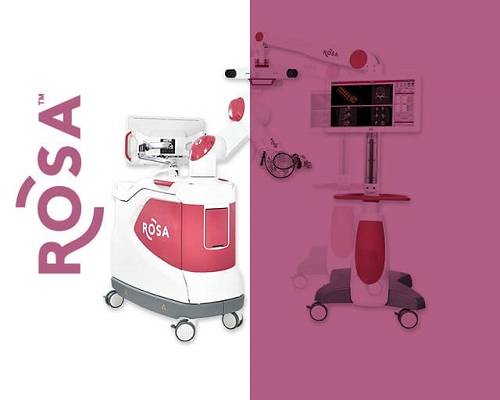“The brother of our group’s VP tragically passed away from nosocomial infection in Europe after undergoing surgery for an accidental bone fracture.” Efforts against the pandemic have been on high alert ever since nosocomial infection occurred for COVID-19 in a Taiwan hospital. President Shih Chi-Tao of UHG reminisced about the past when speaking on “clean . precision”. When he resolved the group to help hospitals manage infections, the group started to implement “clean and precision” in 2017. In 2019, UHG worked with Tungs’ Taichung MetroHarbor Hospital to research how to conduct a “clinical study for UV disinfection robots” to reduce nosocomial infections; in the latter half of that year,UHG imported “UVD Robot and forged a partnership with Tungs’ Taichung Metro Harbor Hospital and UVD Robot’s original manufacturer in Denmark to conduct a 4-month clinical study. The study produced remarkable findings and provided empirical evidence that bacteria testing rate could be reduced by a maximum of more than 80%. The smart autonomous human-machine collaborative robot solved the disadvantages of fixed disinfection and was first implemented in UHG’s offices to provide employees with a safer, cleaner work environment.
After a Subordinate’s Relative Passed Away from Nosocomial Infection, the President Resolved to Promote the Principle of “Clean and Precision”
According to the U.S. Center for Disease Control (CDC), 75,000 patients die annually in the U.S. due to nosocomial infection; 1 in 25 patients suffer the risk of infection. President Shih Chi-Tao expressed that the White House announced “The National Action Plan for Combating Antibiotic-Resistant Bacteria” in March 2015 with the goal of reduce nosocomial infection to less than 50% for 2 specific bacteria by 2020. Unison Healthcare Group (UHG) agreed with the White House’s action plan and has been promoting the medical perspectives of “precision diagnosis” and “precision treatment” since 2016, but also advanced our actions further in 2017 with the advocacy of the “cleanand precision” concept of healthcare.
In 2012, the U.S. began implementing fixed-point high performance UV disinfection equipment in order to comprehensively improve the issue of healthcare-associated infections; these types of equipment were time consuming and required manual labor to support in the disinfection of medical personnel. Therefore, the group has scoured global markets to identify equipment that can assist with clinical disinfection and managing nosocomial infection. President Shih Chi-Tao emphasized that realizing the potential of “precision diagnosis” and “precision treatment” can only be achieved by providing a clean and worry-free medical environment.
UVD Robot Operates Autonomously, Shines in Managing Nosocomial Infection
Preventing nosocomial infection requires frequent washing of hands, wearing face masks, while UV rays can be used to enhance the “final cleaning” in operating theaters and intensive care wards. Executive Director Albert Chung of New Product Development at UHG points out that UV rays can destroy the DNA/RNA structure of bacteria or viruses to inactivate or even kill pathogens. According to research, UV rays can quickly kill viruses such as SARS and MERS; COVID-19 can also be killed as it shares similar structure due to its classification as a coronavirus.
However, traditional or modern fixed UV rays are static light sources with many dead zones and the inability to provide effective “full coverage” disinfection. As such, a hospital in Taiwan has adopted the “UVD Robots” and achieved good results after a 4-month long clinical trial. Albert Chung mentions the following highlights of disinfection robots:
(A) UV lamps with 10 times the power: 8 long-lasting UV lamps provide a total power of up to 480 watts.
(B) Human-machine collaboration: A customized disinfection plan can be designed according to each hospital or environment to perform dynamic fixed point and multi-phase disinfection. For instance, the robot can travel in a loop within the intensive care ward or operating theater with settings to stand longer in certain areas for quick and efficient disinfection that eliminates any dead zones with full coverage.
(C) High-performance mobility: The smart robot travels autonomously towards high risk contact surfaces that require disinfection.
(D) Short exposure time: Taiwan’s negative pressure quarantine wards are on average 9~16 square meters and can be completely disinfected in approximately 15 minutes; the 2 to 8 hours required in traditional UV ray disinfection can be shortened to 10 to 15 minutes.
(E) Powerful bacteria killing capabilities: A Taiwanese clinical trial found that bacteria testing can be reduced by more than 80% in operating theaters and intensive care wards disinfected by the robot; disinfection can kill 99.99% of all bacteria and coronavirus.
Disinfection Robots in the Workplace can Ensure Employee Safety
In response to the coronavirus, the “UVD Robot” has also been dispatched in UHG offices in addition to hospitals. Albert Chung stated that “as a company in the healthcare industry, many of our external staff frequent hospitals to serve clients so our offices are exposed to higher risk than your average business.” Additionally, the unpredictability of this pandemic makes every individual a potential carrier of an unknown virus; by enhancing disinfection with robots, we can prevent cluster infections, guarantee a cleaner environment, and allow our employees to perform their jobs without worry.
Albert Chung continued by saying that disinfection robots can be applied in areas other than hospitals, such as food processing plants, drug manufacturing facilities, long-term care institutions, postpartum care centers, kindergartens, and hotels. “As long as people practice social distancing, UV ray disinfection can be applied within most spaces.” However, it is an important reminder that personnel exposure should be avoided when utilizing UV rays.


![[UHG Medical News] Disinfect to Protect Against the Wuhan Coronavirus! This Company’s Employees Work in a Safe Office Disinfected by Robots](/uploads/065f07b893a5484993e3354eabb17c5d.jpg)

